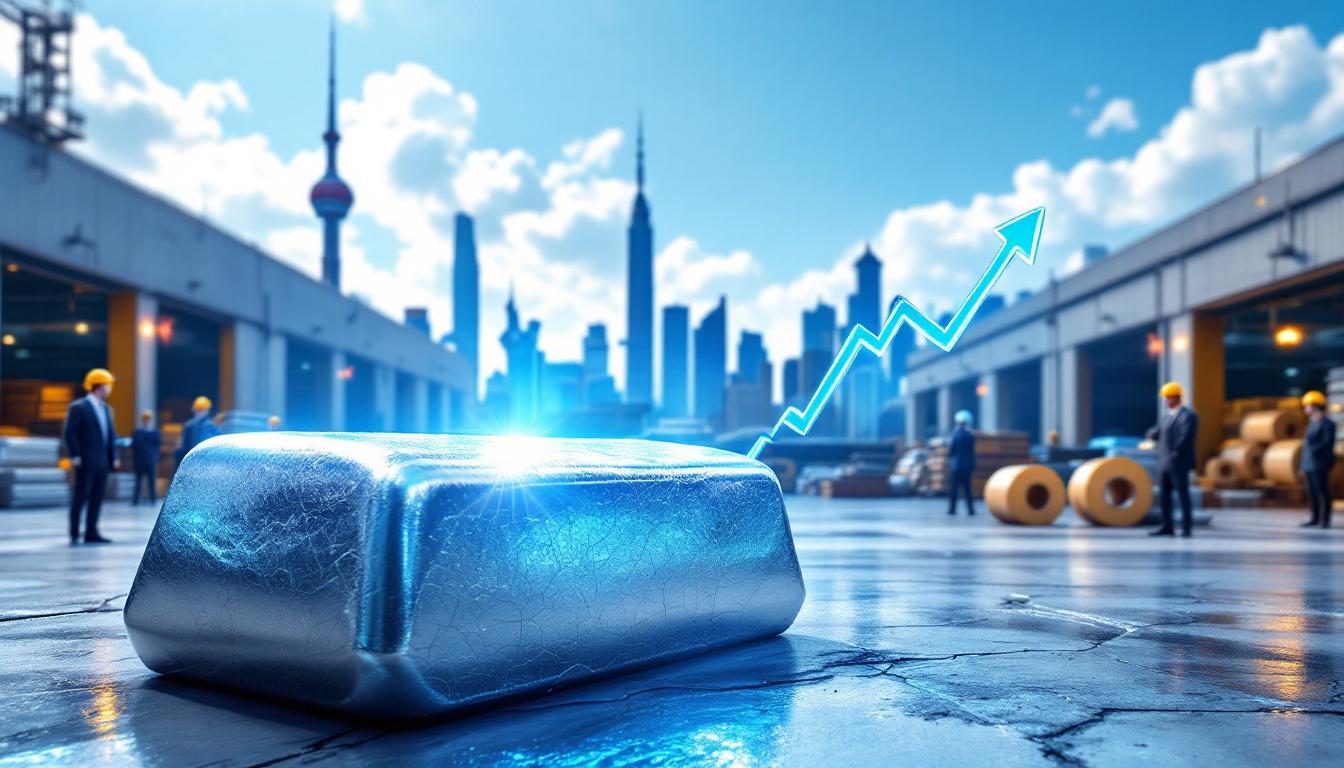Why Is Albemarle Delaying Its $1.3 Billion US Lithium Refinery?
Economic Challenges Facing the South Carolina Project
The hard numbers tell a sobering story behind Albemarle's decision to pause its massive South Carolina lithium refinery. Global lithium prices have plummeted by a staggering 74% over the past two years, according to Benchmark Mineral Intelligence data, with prices falling from roughly $70,000 per ton to approximately $18,500 per ton in early 2025. This dramatic collapse has fundamentally changed the economics of new Western lithium projects.
Albemarle CEO Kent Masters didn't mince words about the situation: "The math doesn't work today" for the $1.3 billion refinery investment. Industry analysts estimate Western lithium projects typically require sustained prices between $20,000-$25,000 per ton to justify their capital investments—a threshold well above current market rates.
The primary culprit behind this price collapse is Chinese overproduction. Chinese producers, often benefiting from government subsidies and lower operating costs, have flooded the market with lithium, creating a global supply glut. Chinese companies now control approximately 65% of global lithium refining capacity and can profitably operate at lower price points than their Western counterparts.
Albemarle's own financial performance reflects these challenging market conditions, with its Q1 2025 earnings showing a 22% year-over-year revenue decline in its lithium segment. This financial pressure makes large capital expenditures particularly difficult to justify to shareholders.
Strategic Implications for US Battery Metal Security
The paused South Carolina facility represents more than just a corporate investment decision—it would have been the largest lithium processing plant in the United States, designed to produce 50,000 metric tons annually of battery-grade lithium hydroxide. This capacity is critical considering the United States currently processes less than 2% of global lithium output.
America's lithium vulnerability is stark: the country relies on imports for approximately 95% of its lithium compounds, primarily from Chile, Argentina, and China. This dependence creates significant battery metals challenges for industries vital to America's clean energy transition and national security.
The delay directly impacts the Biden administration's ambitious goal of 50% electric vehicle adoption by 2030. Without domestic processing capacity, American automakers and battery manufacturers remain dependent on foreign supply chains dominated by China, potentially slowing EV manufacturing growth and risking future supply disruptions.
This reliance on imports stands in sharp contrast to the growing strategic importance of lithium as the "white gold" powering the global transition to electric vehicles and renewable energy storage. The refinery's pause represents a significant setback for efforts to establish domestic supply chain resilience in this critical sector.
How Does This Decision Impact America's Critical Minerals Strategy?
Current US Lithium Supply Chain Vulnerabilities
The United States faces severe structural weaknesses in its lithium supply chain. The country currently operates just one commercial lithium mine—Albemarle's Silver Peak facility in Nevada—which produces only a fraction of domestic demand. More concerning is the complete absence of commercial-scale lithium hydroxide production facilities necessary for manufacturing advanced EV batteries.
This supply gap forces American manufacturers into a precarious position. Tesla, America's largest EV producer, must import approximately 90% of its battery-grade lithium from overseas sources, primarily Chinese refiners. This dependency creates vulnerabilities to price volatility, supply disruptions, and potential geopolitical leverage.
The disparity between policy ambitions and economic reality is increasingly apparent. While the U.S. government has identified lithium as a critical mineral essential for economic and national security, the private sector faces significant economic hurdles to developing domestic capacity—particularly in a market flooded with cheaper Chinese material.
Environmental and permitting challenges further complicate domestic development. New mining and processing projects in the U.S. typically face 7-10 year approval timelines, compared to 2-3 years in competing nations. This regulatory burden adds significant costs and delays that disadvantage U.S. projects compared to international competitors.
Potential Government Intervention Options
Albemarle's CEO directly addressed the need for policy support, stating: "I don't think private companies are going to be able to do it on their own." This frank assessment highlights the growing recognition that market forces alone may be insufficient to establish strategic mineral security.
Several policy mechanisms could potentially improve project economics. Production tax credits similar to those implemented for clean energy generation could reduce effective operating costs. Federal loan guarantees could lower capital costs and financing risks. Direct purchase agreements from the Strategic Petroleum Reserve model could provide price stability and guaranteed offtake.
International examples offer potential policy templates. Australia has established a $2 billion Critical Minerals Facility to provide loans and guarantees for processing projects. Canada now offers a 30% investment tax credit specifically for critical mineral processing. The European Union's Critical Raw Materials Act mandates 10% domestic lithium extraction by 2030, creating market certainty.
The challenge involves balancing free-market principles with strategic imperatives. Unlike China's state-directed approach, Western governments have historically been reluctant to directly intervene in commodity markets. However, the growing recognition of lithium's strategic importance is shifting this calculus, potentially opening the door to more active government support.
What Alternative Strategies Is Albemarle Pursuing?
Direct Lithium Extraction (DLE) Investments
Rather than abandoning lithium altogether, Albemarle is redirecting investment toward technological innovation—particularly direct lithium extraction. The company has committed $200 million to DLE pilot projects in both Chile's Salar de Atacama and various U.S. locations, including Arkansas and Nevada.
DLE technology promises significant advantages over traditional extraction methods. While conventional evaporation ponds typically recover only 50% of available lithium and require 18-24 months of processing time, advanced DLE systems aim for 90% recovery rates in days rather than years. This efficiency gain could dramatically improve economics even in lower-price environments.
Environmental benefits provide another compelling argument for DLE. Traditional brine extraction consumes vast quantities of water in often arid regions—approximately 500,000 gallons per ton of lithium. DLE technologies can reduce water consumption by up to 70%, addressing a key environmental and regulatory concern for new projects.
Albemarle appears focused on both ion-exchange and adsorption DLE technologies, though the company has not disclosed which specific approach is showing more promise. Industry experts suggest commercial implementation remains 3-5 years away, making this a medium-term rather than immediate solution to current market challenges.
Market Positioning During Price Downturn
Albemarle is simultaneously implementing a comprehensive strategy to optimize existing operations during the current market downturn. Rather than pursuing major greenfield expansions, the company is focusing on extracting maximum value from current assets.
Cost reduction initiatives include implementing AI-driven process controls that have reduced energy consumption by approximately 15% at pilot sites. The company is also exploring lithium recycling from "black mass" (spent battery materials), achieving up to 95% lithium recovery rates in laboratory settings.
Operational flexibility represents another key pillar of Albemarle's approach. The company maintains "shovel-ready" plans for multiple expansion projects that can be rapidly activated when market conditions improve, allowing quick response to eventual price recovery without the delays associated with new project development.
This "bottom of the cycle" strategy positions Albemarle to weather current market conditions while maintaining optionality for future growth. By focusing on efficiency and innovation now, the company aims to emerge stronger when lithium demand eventually outpaces current oversupply.
How Does Albemarle's Approach Compare to Industry Competitors?
Contrasting M&A Strategies in the Lithium Sector
Albemarle's cautious approach stands in marked contrast to some industry competitors. Rio Tinto, for instance, has pursued aggressive acquisition strategies despite the challenging price environment, acquiring Argentina's Rincon Lithium project for $825 million in 2024. This divergence reflects different assessments of market timing and recovery potential.
Financial considerations partly explain these different approaches. Albemarle has acknowledged its limited "war chest" for major acquisitions in the current environment, particularly after significant capital expenditures in recent years. The company's net debt to EBITDA ratio currently stands at 2.8x, limiting financial flexibility compared to more diversified mining giants like Rio Tinto.
Albemarle's selective acquisition criteria focus on what Masters calls "super quality resources"—projects with exceptional grade, scale, and cost position. This high bar reflects the company's conviction that only premier assets can generate acceptable returns in a volatile price environment. The company has reportedly evaluated over 30 potential lithium acquisitions in the past 18 months but proceeded with none.
Industry analysts speculate that Albemarle may become more acquisition-focused if lithium market outlook remains depressed, potentially targeting distressed assets at discounted valuations. However, the company's leadership has consistently emphasized discipline over growth for growth's sake.
Global Production Landscape Evolution
The international lithium production landscape continues to evolve rapidly. Chinese producers have expanded aggressively, with production capacity growing approximately 38% annually since 2020. This explosive growth has fundamentally altered market dynamics, transforming a shortage into a glut within 24 months.
Albemarle's experimental lithium auctions represent an interesting response to market opacity. Traditional lithium pricing has relied heavily on opaque bilateral contracts and inconsistent spot market reporting. By conducting transparent auctions for a portion of its production, Albemarle aims to generate more reliable price discovery while potentially capturing premium pricing for specialized grades.
Chilean operations remain central to Albemarle's current strategy, despite political uncertainties surrounding the country's new lithium policy. The company's Salar de Atacama operation boasts production costs of approximately $3,500 per ton—among the lowest globally and significantly below current market prices. This cost advantage explains Albemarle's continued investment in Chilean expansion despite pausing higher-cost projects elsewhere.
The contrasting approaches between Albemarle and competitors highlight the lack of industry consensus about lithium market in 2025. Some players are betting on rapid demand recovery driven by accelerating EV adoption, while others anticipate a prolonged period of price weakness as Chinese capacity continues to expand.
When Might the South Carolina Project Resume?
Market Conditions Required for Project Viability
Albemarle has established internal price thresholds for resuming the South Carolina project, though the company has declined to publicly specify the exact figure. Industry analysts estimate sustained lithium prices above $25,000 per ton would be necessary to generate acceptable returns on the $1.3 billion investment—approximately 35% above current market levels.
Electric vehicle adoption rates represent the most critical factor influencing future lithium demand. Current growth stands at approximately 18% year-over-year globally, but analysts suggest 25-30% annual growth would be necessary to absorb projected supply and drive meaningful price recovery. China's EV subsidy policies and Europe's vehicle emissions targets will significantly influence this demand trajectory.
Supply rationalization may prove equally important for market recovery. Several high-cost lithium operations, particularly Australian hard-rock mines, have already announced production cuts or complete suspensions. If this supply discipline continues, market balance could return more quickly than current projections suggest.
Albemarle maintains the South Carolina project in a "shovel-ready" state, preserving the ability to move quickly when conditions improve. The company has completed detailed engineering, secured key permits, and maintained land control—allowing potential restart within 3-6 months of a decision to proceed.
Factors That Could Accelerate Development
Government policy interventions could significantly improve project economics independent of market prices. The Infrastructure Investment and Jobs Act allocated $3 billion for battery material processing, though specific lithium refining projects have yet to receive substantial funding. More targeted policy support, such as production tax credits modeled after clean energy incentives, could potentially bridge the economic gap.
Geopolitical considerations might also accelerate development timelines. Rising tensions with China have increased focus on supply chain vulnerabilities across critical minerals. A national security determination prioritizing domestic lithium production could potentially unlock Defense Production Act funding or other extraordinary support mechanisms previously used for semiconductor manufacturing.
Technological breakthroughs, particularly in processing efficiency, could improve project economics at lower price points. Albemarle's ongoing research into energy-efficient refining methods and higher-yield extraction techniques aims to reduce the break-even price needed for project viability. The company reports promising early results, though commercial implementation remains several years away.
Industry partnerships offer another potential acceleration path. Auto manufacturers with ambitious EV targets face significant supply chain risks from lithium dependency. Strategic partnerships including offtake agreements, equity investments, or joint ventures could provide the financial certainty needed to advance the project despite challenging market conditions.
What Does This Mean for US Battery Manufacturing Plans?
Supply Chain Implications for American EV Production
The delay in building significant domestic refining capacity creates substantial complications for U.S. battery manufacturing ambitions. Major investments totaling over $70 billion in new battery gigafactories now face potential raw material constraints, as domestic cathode material production remains dependent on imported lithium compounds.
Alternative sourcing options exist but carry significant drawbacks. Continuing to rely on China's lithium export controls introduces both supply security risks and potential tariff exposure. Importing from allied nations like Australia, Chile, or Argentina addresses security concerns but still involves longer supply chains vulnerable to disruption. Accelerating battery recycling offers a partial solution but cannot meet near-term needs.
Cost implications for American EV manufacturers are substantial. Lithium typically represents 8-10% of battery cell costs, which in turn constitute 30-40% of total EV costs. Without domestic processing capacity's economies of scale, U.S. producers may face a structural cost disadvantage of $1,500-2,000 per vehicle compared to Chinese competitors with vertically integrated supply chains.
The timing mismatch between battery factory construction and raw material availability creates particular challenges. Most announced battery plants are scheduled to reach full production between 2025-2027, precisely when lithium supply constraints could become most acute if domestic processing capacity remains underdeveloped.
Long-term Competitiveness Considerations
Strategic considerations extend beyond immediate economic calculations. Chinese companies have systematically developed vertically integrated supply chains spanning mining, processing, cathode production, and cell manufacturing. This integrated approach provides significant competitive advantages in cost, quality control, and supply security.
Innovation opportunities in lithium processing technology represent a potential American advantage. U.S. companies and research institutions lead in developing next-generation extraction and processing techniques, including Direct Lithium Extraction and solid-state electrolyte technologies. Successfully commercializing these advances could potentially leapfrog current processing methods.
The fundamental tension between economic viability and strategic necessity remains unresolved. Private companies face fiduciary responsibilities to shareholders that complicate investments in projects that may be strategically vital but economically marginal. Addressing this disconnect likely requires new models of public-private partnership that better align corporate and national interests.
Battery manufacturers are beginning to adapt strategies to this challenging landscape. Some are pursuing backward integration by directly investing in lithium projects to secure supply. Others are developing alternative chemistries that reduce lithium dependency, such as sodium-ion or lithium-sulfur technologies. These adaptations may help mitigate but cannot eliminate the strategic challenges posed by lithium dependency.
FAQ: Understanding the US Lithium Refining Challenge
Why is domestic lithium processing important for the US?
Domestic lithium processing reduces America's vulnerability to supply chain disruptions and potential geopolitical leverage from countries controlling critical resources. China has demonstrated willingness to weaponize resource dependencies, as seen in its 2022 rare earth export controls during diplomatic tensions. Beyond security concerns, domestic processing creates high-wage manufacturing jobs and supports the clean energy transition while reducing emissions associated with international shipping of processed materials.
How does lithium pricing affect investment decisions?
Lithium price volatility directly impacts project economics and investment returns. The 74% price decline since 2023 has made many Western projects economically unviable despite their strategic importance. While Chinese producers can operate profitably at $15,000 per ton due to vertical integration, government support, and lower energy costs, Western producers typically need $20,000-$25,000 per ton to justify multi-billion dollar capital expenditures. This price differential creates a competitive gap that market forces alone struggle to overcome, particularly for shareholder-owned companies with quarterly performance pressures.
What role could government play in developing domestic lithium capacity?
Governments have multiple potential intervention mechanisms to improve lithium project economics. Financial incentives could include production tax credits, investment tax credits, loan guarantees, or direct grants. Policy support might encompass expedited permitting, research funding for processing technologies, or purchase guarantees through strategic reserves. Trade policy tools like tariffs on imported materials could help level the playing field against subsidized foreign competition. The optimal approach likely involves a coordinated strategy rather than isolated measures, potentially modeling Australia's comprehensive Critical Minerals Strategy or Canada's targeted incentive programs.
How might changing trade policies impact project economics?
Trade policies significantly influence lithium project viability. Current Section 301 tariffs on Chinese lithium imports range from 7.5-25%, providing some protection for domestic producers but increasing costs for U.S. battery manufacturers. Proposed "friendshoring" initiatives would incentivize imports from allied nations while disadvantaging Chinese suppliers. Carbon border adjustment mechanisms being considered could benefit domestic production by accounting for transportation emissions in imported materials. The uncertain trajectory of these policies complicates investment decisions, as projects initiated under one trade regime may operate under substantially different conditions after completion.
What technological innovations could improve US lithium
Want to Invest in the Next Major Mineral Discovery?
Discovery Alert's proprietary Discovery IQ model instantly alerts investors to significant ASX mineral discoveries, turning complex data into actionable insights while other investors are still analysing announcements. Understand why historic discoveries generate substantial returns by visiting Discovery Alert's dedicated discoveries page and position yourself ahead of the market with a 30-day free trial.




